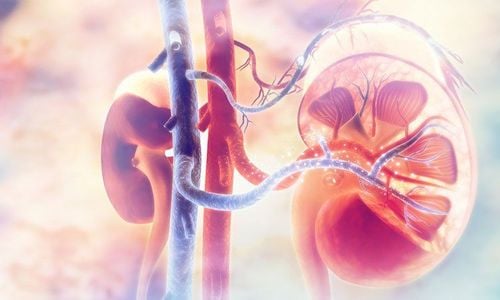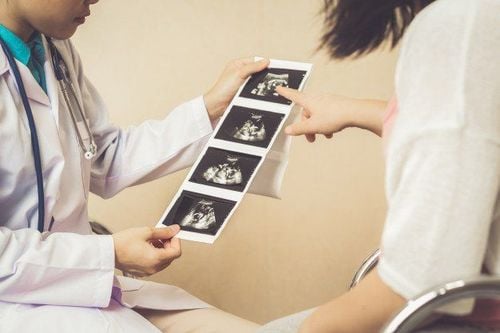This is an automatically translated article.
The article was professionally consulted by Master, Resident, Specialist I Trinh Le Hong Minh - Department of Diagnostic Imaging - Vinmec Central Park International General HospitalUltrasound is a commonly ordered test that works by applying high-frequency sound waves to probe parts of the body. However, like other tests, ultrasound can still encounter image noise that can distort the results. So what is noise in ultrasound imaging?
1. What is image noise?
Image noise in ultrasound is a bogus or inappropriate image of organs in the body. Image noise can obscure an actual lesion, leading to misjudgment or misjudgment of features such as location, echogenicity, size, or shape of the lesion. However, noise in ultrasound is not always harmful. Some cases of image noise help diagnose more accurately. For example, if a normal structure has translation, then the noise in the ultrasound image will be hyperechoic after an empty or poor echogenic structure. Another example would be if there is a dorsal shadow behind a thick echogenic structure that would suggest it might be a calcified spot, stone, bone, or air.Therefore, in order for image noise in ultrasound imaging to not cause diagnostic errors, the sonographer needs to understand the characteristics of the pseudo-image trap and its normal variations.
2. Image noise in ultrasound due to interaction between tissue and sound waves
2.1. Rear amplified image Rear amplified image noise occurs because the structure to be observed has a lower acoustic impedance than the acoustic impedance of the background environment. This results in the transmitted ultrasonic wave consuming less energy and the returning echo having a higher amplitude.This image noise is characterized by a brighter (whiter) image behind the structure, found in parts such as liver cyst, spleen, kidney, ovary...
Image noise in this ultrasound can help Diagnosis of that lesion is fluid in nature, but in some cases it obscures or misjudges the posterior lesion as in the case of ascites.
2.2. Noise in the background of this type of ultrasound is caused by the weakening of ultrasonic waves when passing through structures located deep in the body due to the phenomena of reflection, refraction, absorption, and diffusion of waves. sound... Posterior hypoechoic usually occurs on ultrasound of a solid structure, more commonly when the structure to be examined is a tumor rather than an inflammatory mass.
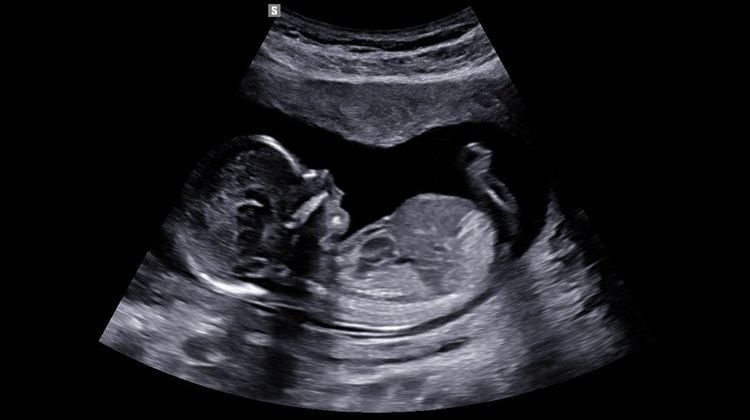
The image noise in the shadow ultrasound that occurs when the sound waves come in contact with the above structures will dissipate more energy, resulting in the returning echo with a lower amplitude than the amplitude of the structures at the same depth. that of the surroundings. In particular, a form of image noise on ultrasound that appears after a time-varying air bubble with two unsharp edges is called a dirty dorsal shadow.
2.4. This phenomenon occurs when the ultrasonic wave enters the medium with a large reflectance coefficient, it will create a high-amplitude reflected wave back to the transducer. At this time, a thick echo line is recorded on the screen. Then, this reflected wave continues to return to this high reflectance medium and generate echo again and create the image of the 2nd thick echo line parallel to the 1st line.
Image noise in This type of ultrasound will repeat many times and create many thick, parallel echo lines until the echo energy is completely suppressed. This phenomenon is common during ultrasound of very dense echogenic structures such as drains, air, abdominal wall fat...
2.5. Comet-tail noise Image noise in comet-tail ultrasound occurs in the ultrasound case of a structure with two strongly reflective interfaces located close to each other. For example cholesterol stones, stones containing gas inside, 2 metal sides located close to each other of the IUD...
This mechanism of image interference is when echoes are reflected consecutively on the surface of these structures and create images that are parallel, alternating black and white horizontal lines and become smaller like a "comet's tail''.
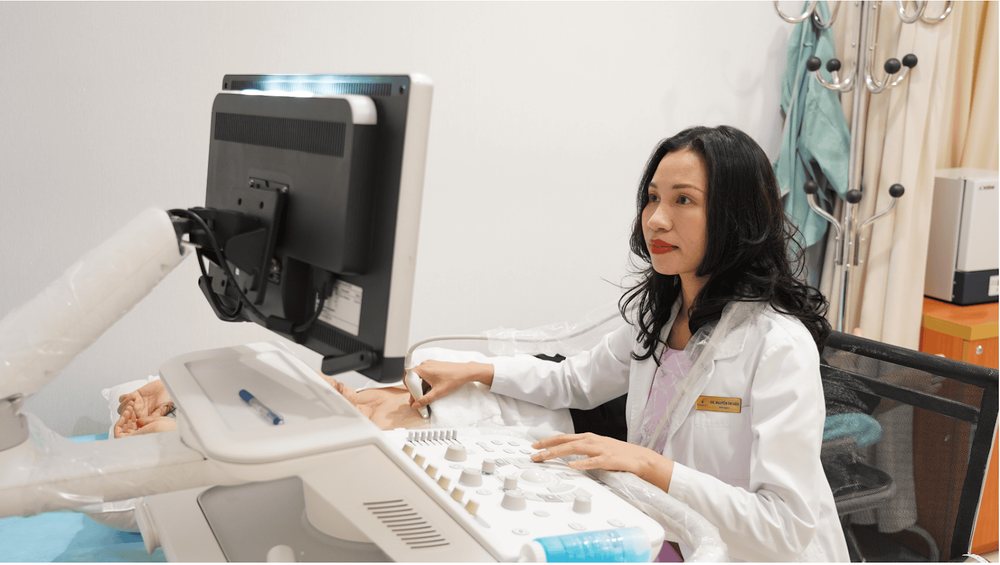
The structure to be ultrasound has 1 curved surface with strong echo. A specific example is when ultrasounding an intrahepatic hemangioma, because the liver is located near the dome of the diaphragm, the image noise is a similar structure symmetrically across the diaphragm. However, it is actually due to the phenomenon of double reverberation on the curvature of the diaphragm, causing the transducer to record a second shadow located on the opposite side of the diaphragm.
2.7. Image noise in ultrasound due to refraction Bounce occurs when the ultrasonic wave is not perpendicular to the interface of the structure under investigation. For example, because the two rectus abdominis are symmetrical, the two beams from the two constrictors of the straight transducer converge at a structure such as the abdominal aorta or the uterus. The resulting image noise is two aortic balloons, a double uterus, or sometimes two contralateral gestational sacs across the midline.
2.8. Sub-Beam Image Noise - Side Lobe Effect An ultrasonic transducer not only emits a main ultrasonic beam with its axis coincident with the transducer axis, but also emits auxiliary beams with the axis off-angle to the beam. main (called the lateral lobe). Although the energy of the auxiliary beam is much lower than that of the main beam, it can still create echoes when it comes into contact with a strong reflective interface (such as the bladder wall in contact with the rectum).
As a result, the image obtained has 2 echo lines located symmetrically in the bladder lumen like sediment, when changing the scanning direction, the image noise in this ultrasound will be lost.
3. Instrument sound noise
3.1. Acoustic interference from nearby equipment Electronic components produce electrical pulses of low amplitude, which are amplified, creating intermittent scattered light trails, most evident in the depths.3.2. Explosive effect Due to strong reflective surface between skin and transducer or gain near too large
4. Image noise in ultrasound due to technical errors
Improper tuning of the machine: Adjusting to the wrong specifications can produce strong echoes in shallow structures, weak echoes in deep structures and vice versa. In addition, technical errors can create pseudocystic surface lesions or obscure lesions due to strong echoes. Incorrect contrast and brightness settings will miss small lesions. Placing the transducer not close to the skin may cause some loss of the lesion image.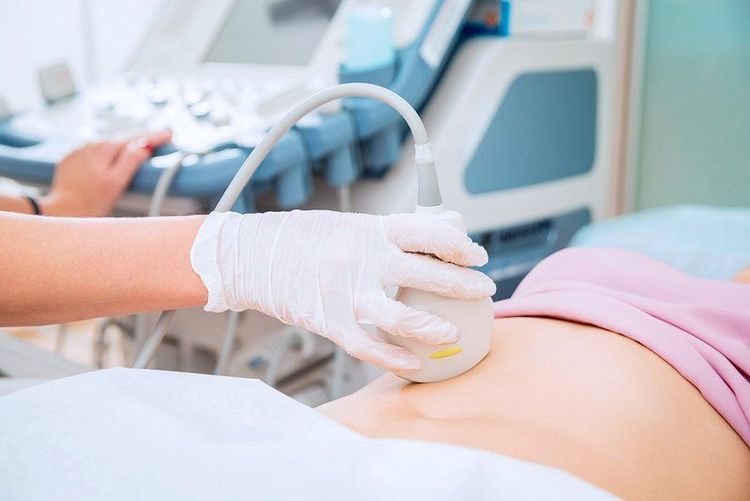
5. Image noise in ultrasound due to motion
Some movements can err on the results, create image noise such as:Strong breathing; The probe scan is too fast; Using hand pressure to apply pressure on the patient's skin is too strong or not enough. Currently, there are many medical facilities that apply ultrasound technology in the early diagnosis and treatment of diseases. Vinmec International General Hospital system has been using the most modern generations of color ultrasound machines today in examining and treating patients. One of them is GE Healthcarecar's Logig E9 ultrasound machine with full options, HD resolution probes for clear images, accurate assessment of lesions, and limited image noise. In addition, a team of experienced doctors and nurses will greatly assist in the diagnosis and early detection of abnormal signs of the body in order to provide timely treatment.
Please dial HOTLINE for more information or register for an appointment HERE. Download MyVinmec app to make appointments faster and to manage your bookings easily.








